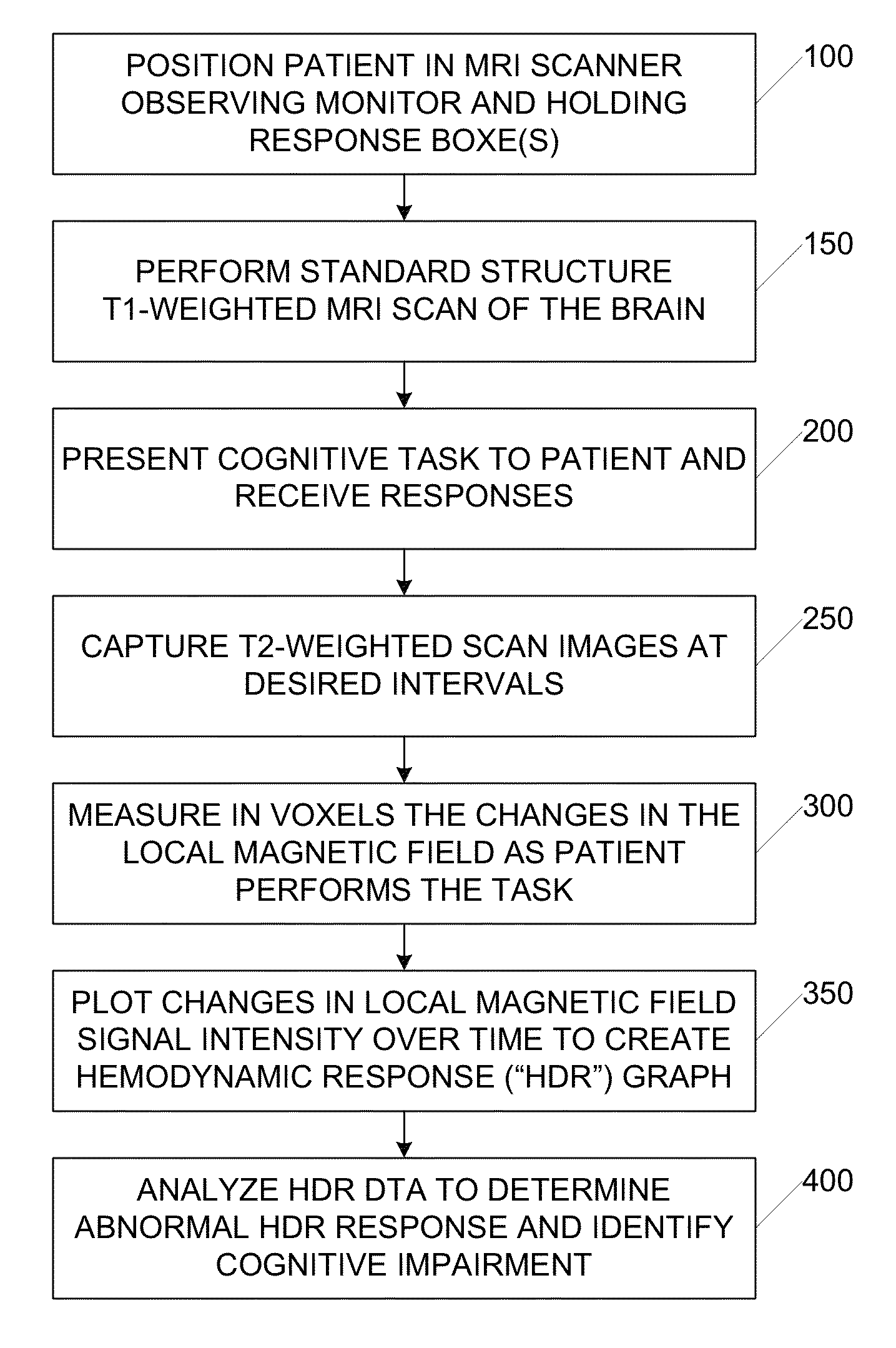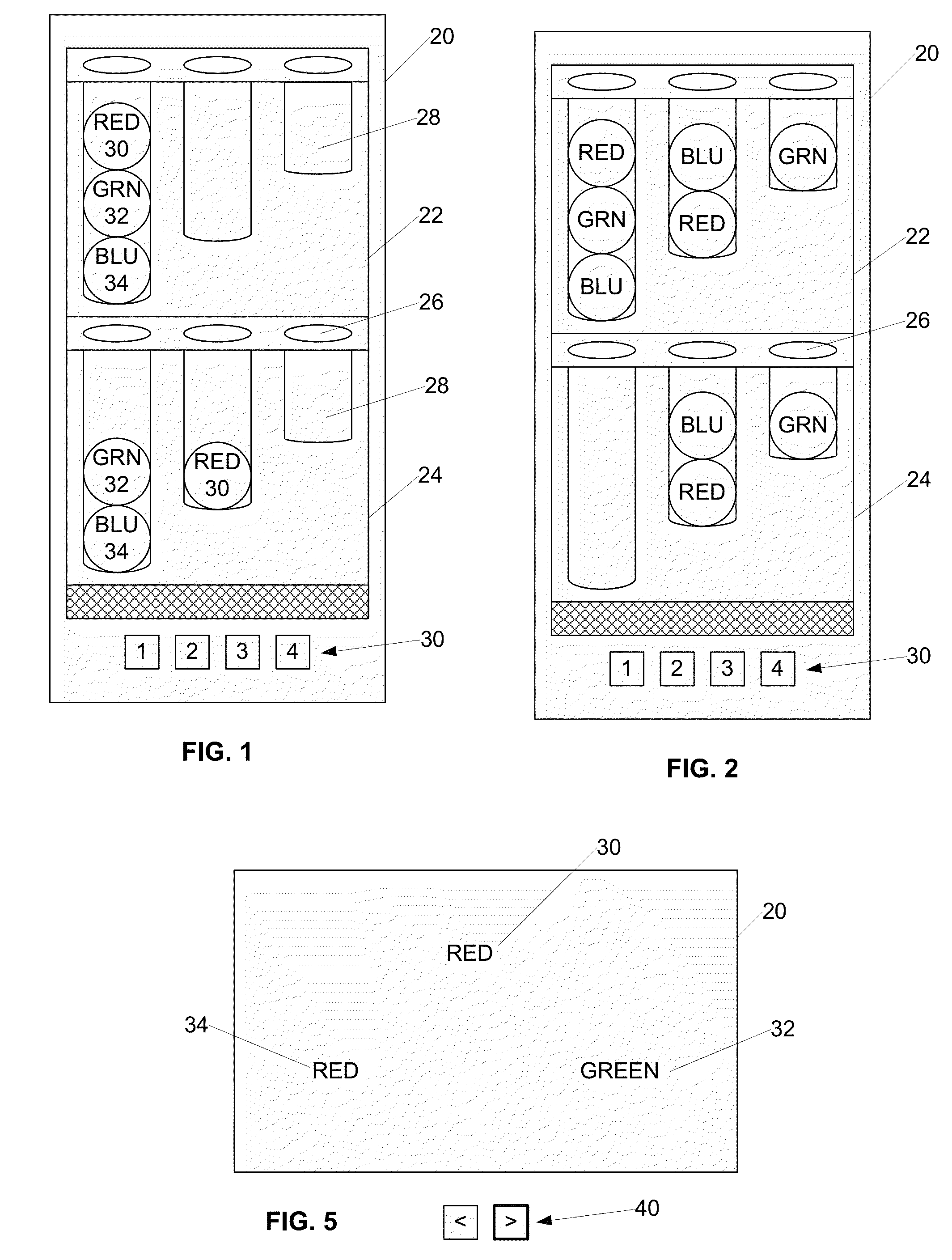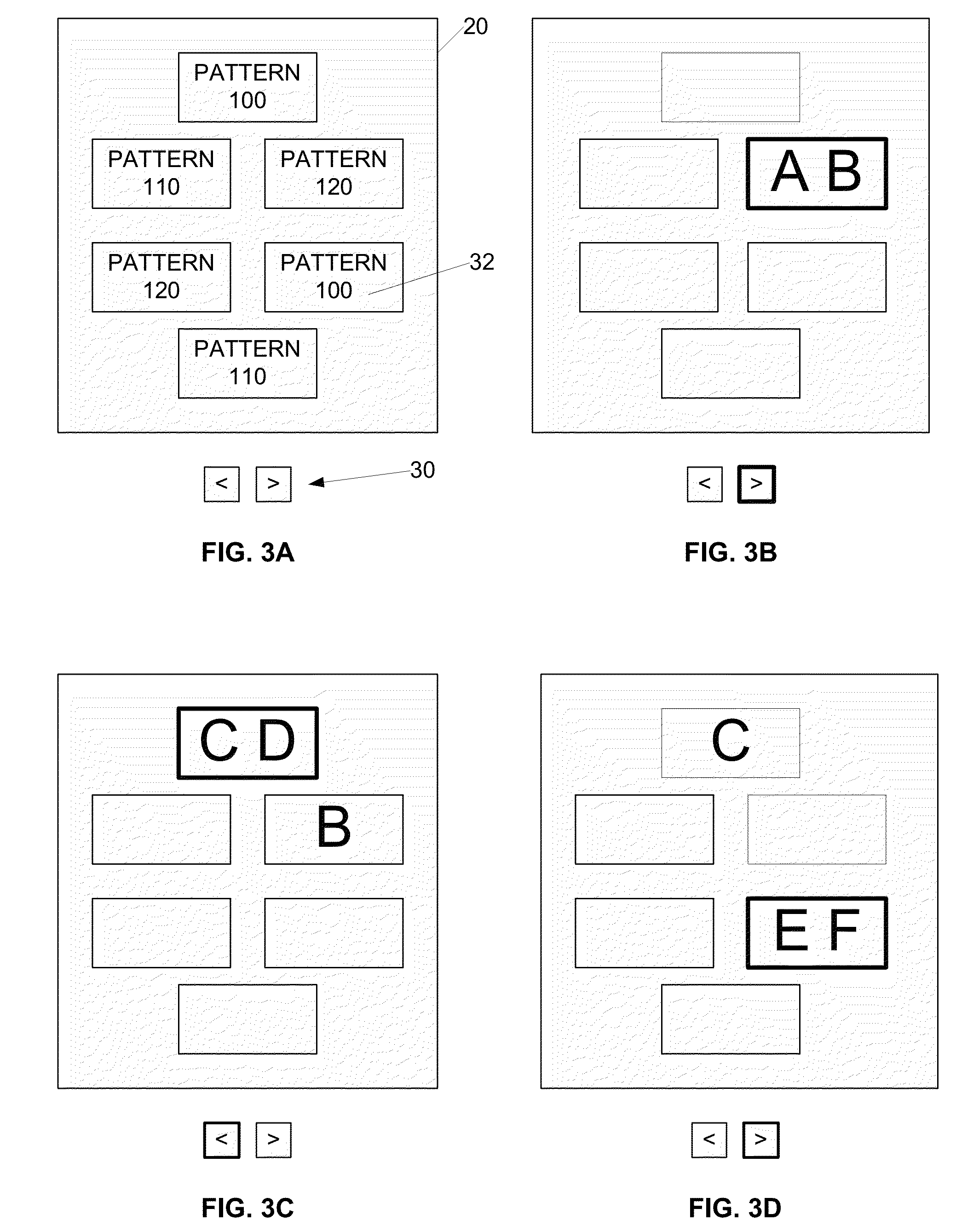Functional magnetic resonance imaging biomarker of neural abnormality
a functional magnetic resonance imaging and biomarker technology, applied in the field of functional magnetic resonance imaging, can solve the problems of not being able to objectively detect cognitive impairments due to disease or injury by conventional standard tests, and the medical industry has yet to establish a reliable solution for detecting and tracking the long-term consequences of repetitive mtbi in living subjects
- Summary
- Abstract
- Description
- Claims
- Application Information
AI Technical Summary
Benefits of technology
Problems solved by technology
Method used
Image
Examples
example study
[0047]A study was recently conducted in San Diego, Calif. to analyze the use of fMRI to identify neural abnormality in subjects having multiple mTBIs.
[0048]Participants: The FANTAB normative database was used for this study. Sixty healthy volunteers from the FANTAB database were recruited from the San Diego area for this study. All volunteers are right-handed college graduates, fluent in English, with normal or corrected-to-normal eyesight, normal hearing, and no history of neurological or psychiatric illnesses. These individuals were selected to cover a range of ages, between 20 and 60 years old. In the current study, an age-matched subset of twenty volunteers was compared to the NFL group (mean age controls=53 years old, NFL alumni=54 years old). Thirteen retired American professional football players participated in the neuroimaging study. They had no diagnosis of neurological or psychiatric illness. A further two retired players volunteered but could not be included in the neuro...
PUM
 Login to View More
Login to View More Abstract
Description
Claims
Application Information
 Login to View More
Login to View More - R&D
- Intellectual Property
- Life Sciences
- Materials
- Tech Scout
- Unparalleled Data Quality
- Higher Quality Content
- 60% Fewer Hallucinations
Browse by: Latest US Patents, China's latest patents, Technical Efficacy Thesaurus, Application Domain, Technology Topic, Popular Technical Reports.
© 2025 PatSnap. All rights reserved.Legal|Privacy policy|Modern Slavery Act Transparency Statement|Sitemap|About US| Contact US: help@patsnap.com



